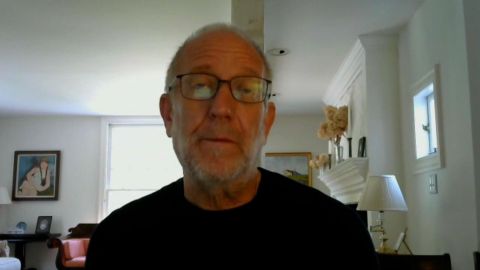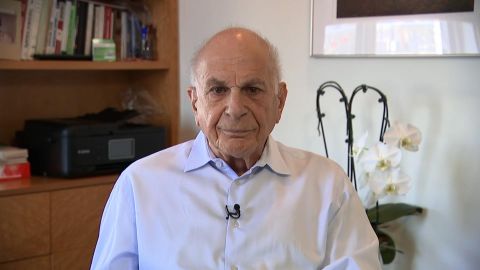Read Transcript EXPAND
DANIEL KAHNEMAN, AUTHOR “NOISE: A FLAW IN HUMAN JUDGEMENT.”: Well, noise is variability where you don’t want it. And the easiest way to think about noise is to think of it of noise in measurements. So, when you have a line, and you’re trying to measure it with — in very fine detail, and you measure it multiple times, you won’t get the same result every time. That variability is noise. And bias is when you have a systematic error, when the average error is either for the measurement to be too long or too short. And — but even when you have no bias, if your measurements vary, certainly, if they vary all over the place, then you have error. And that form of error is noise.
BIANNA GOLODRYGA: So, from a human thinking standpoint — and I don’t want to spend this whole segment talking about the conflict in the Middle East, but it does strike me that you are from Israel, and you are aware of the current events there. And my question is, what aspect of noise and bias is there in the decision- making on the ground from multiple parties in this conflict?
KAHNEMAN: Well, in this conflict, I think what you have is a lot of bias, certainly. And noise, in the sense of variability in decisions, is less visible. I mean, the whole thing is overwhelmingly biased, I think, in this situation. Noise is randomness in decision-making. When you have a lot of rigidity on both sides, noise is not your problem. But, in many other situations, noise is the problem.
GOLODRYGA: And give us some of those situations, then, in terms of let’s talk about occupations and among doctors and multiple diagnoses for cancer patients.
KAHNEMAN: Certainly.
GOLODRYGA: How does noise play a role?
KAHNEMAN: Well, let’s start from the judicial system. So, we have a lot of evidence that looking at the same defendant and the same crime, the same case, different judges will pass sentences that vary a great deal, by years, in fact. For the same offense, you could have a judge, one judge, saying 30 days in jail and the other 15 years. I’m not making this up. This is the result of experiments on that. Similarly, you have noise among doctors in the E.R. What treatment you will get, what diagnosis will be made depends on which doctor happens to be assigned to the case. That is noise. There is noise in underwriting. There is an insurance company. There is noise in the evaluation of investments. There is noise in decisions about foster care for children. There is noise in patterns.
About This Episode EXPAND
Ben Wedeman; Yossi Klein Halevi; Mariam Barghouti; Daniel Kahneman; Dr. Monica Gandhi
LEARN MORE




